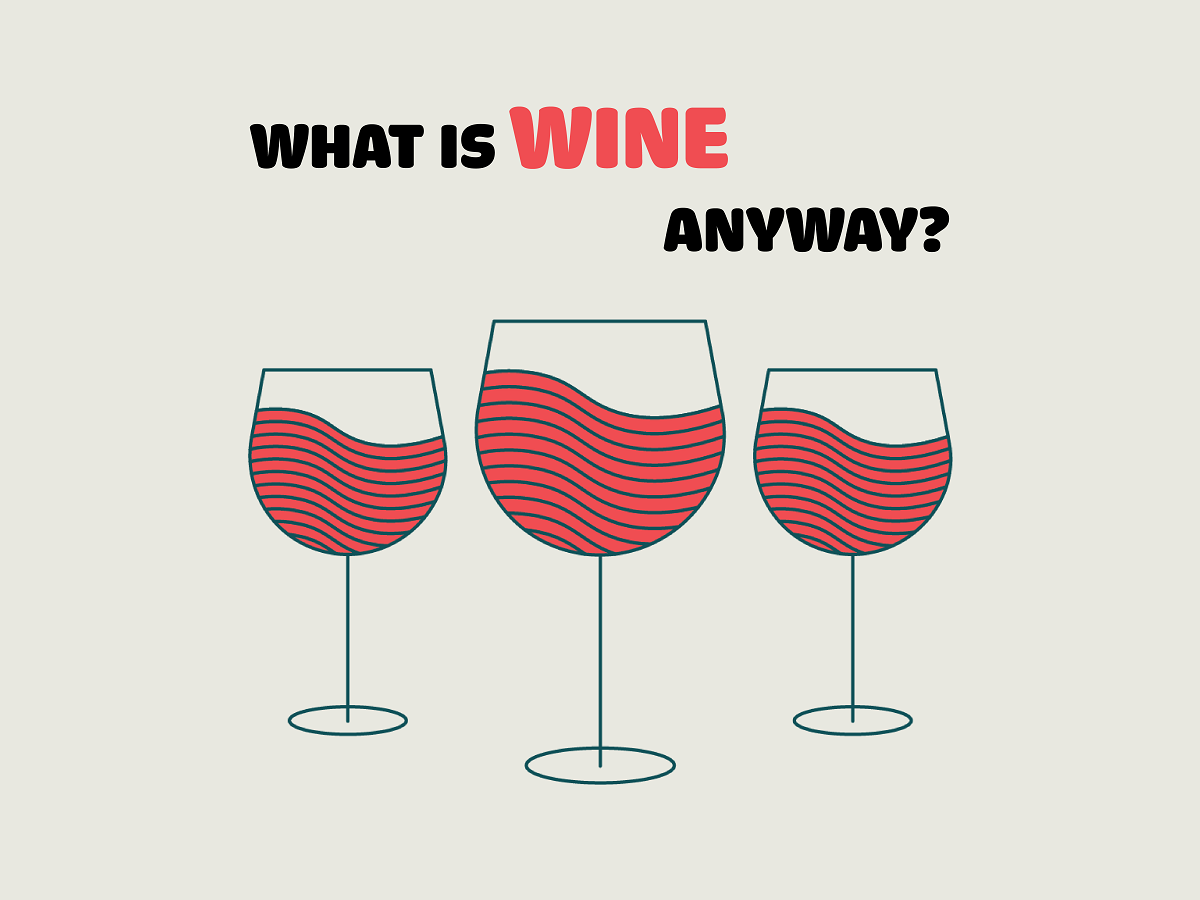
What is Wine anyway?
What is Wine?
Wine is an alcoholic beverage made with the fermented juice of grapes.
Technically, wine can be made with any fruit (i.e. apples, cranberries, plums, etc) but if it just says “wine” on the label then it’s made with grapes. (By the way, wine grapes are different than table grapes).
Speaking of differences, the difference between wine and beer is that beer is made from brewed grains that are then fermented. So very simply, wine is made from fruit and beer is made from grains. Of course, there exceptions –that push the boundaries of beer,–but that story is for another time.

Wine grapes are different than table grapes: they are smaller, sweeter and have lots of seeds. Most wines are made with a single species of grape that originated in Caucasus called Vitis vinifera. There are thousands of different varieties within the Vitis vinifera species–the most common is Cabernet Sauvignon.
Wine grapes take an entire season to ripen and thus, wine is produced just once a year. This is where the term vintage comes from: “Vint” stands for “Winemaking” and “age” implies the year it was made. So, when you see a vintage year listed on the label, that’s the year the grapes were picked and made into wine. The harvest season in the northern hemisphere (Europe, US) is from August–September and the harvest season in the southern hemisphere (Argentina, Australia) is from February–April.
Non-vintage (NV) wine
A single-varietal wine is made primarily with one type of grape. It’s common to see these wines labeled by the name of that grape variety. For example, a bottle of Riesling is made with Riesling grapes. It’s useful to note that each country has different rules for how much of the variety should be included in order to be labeled as a varietal wine.

75% USA*, Chile, South Africa, Australia, Greece
80% Argentina
85% Italy, France, Germany, Austria, Portugal, Spain, New Zealand
*Oregon requires 90% of the varietal

Blending is a traditional method of winemaking, and today there are several famous wine blends produced in classic winemaking regions. Just so you know, most wine blends are mixed together after the fermentation (and aging) is complete. When grapes are blended and fermented together it is called a field blend. A famous example of a field blend is Port wine.
There are several facets that explain wine’s unique flavor: acidity, sweetness, alcohol, tannin, and aroma compounds produced in fermentation.
Acidity: Wine as a beverage lies on the acidic end of the pH scale ranging from as low as 2.5 (lemon) to as high as 4.5 (greek yoghurt). Wine tastes tart.
Sweetness: Depending on what style of wine you drink, sweetness in wine ranges from having no sugar at all to sweet like maple syrup. The term “dry” refers to a wine without sweetness.
Alcohol: The taste of alcohol is spicy, palate-coating and warms the back of your throat. Wine’s average range of alcohol is about 10% ABV (alcohol by volume) to 15% ABV. Of course, there are a few exceptions: Moscato d’Asti is as low as 5.5% ABV and Port is fortified with neutral brandy upping it to 20% ABV.
Tannin: Tannin is found in red wines and contributes to the astringent quality of red wine. Put a wet, black tea bag on your tongue for a great example of how tannin tastes.
Aroma Compounds: Within the tiny minutia of wine (the phenols, esters, higher alcohols, acids, etc) is where you’ll find the complexities to wine’s flavors and aromas. Each grape variety exhibits aroma compounds at different levels. This is why some wines smell like berries and others smell like flowers. Another contributing factor to wine’s aromas is aging. Nearly all red wines are aged in oak, which not only contributes an oak barrel’s flavor compounds (like vanillan) but also acts as a conduit to expose the wine to oxygen. Oxidation and aging produce a range of unique flavors to wine including nuttiness, and dried fruit/flower flavors.





